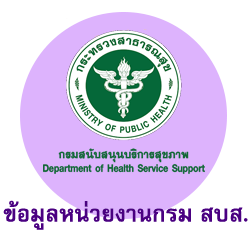พัฒนารูปแบบการดูแลภาวะช็อกจากการเสียเลือดในผู้ป่วยบาดเจ็บหลายระบบ โรงพยาบาลสวรรค์ประชารักษา
คำสำคัญ:
รูปแบบการดูแลผู้ป่วยบาดเจ็บหลายระบบ, ภาวะช็อกจากการเสียเลือด, ผู้ป่วยบาดเจ็บหลายระบบบทคัดย่อ
การวิจัยครั้งนี้เป็นการวิจัยและพัฒนาเพื่อพัฒนาและศึกษาผลลัพธ์ของรูปแบบการดูแลภาวะ ช็อกจากการเสียเลือด (Hypovolemic shock) ในผู้ป่วยบาดเจ็บหลายระบบในระยะวิกฤตหอผู้ป่วยศัลยกรรมอุบัติเหตุ โรงพยาบาลสวรรค์ประชารักษ์ ระยะดำเนินการวิจัยระหว่างเดือนมกราคม 2559 ถึงเดือนสิงหาคม 2559 แบ่งเป็น3 ระยะ คือ 1) ศึกษาสถานการณ์การดูแลผู้ป่วยที่มีภาวะช็อกจากการเสียเลือดในผู้ป่วยบาดเจ็บหลายระบบ 2) พัฒนารูปแบบ 3) ศึกษาผลลัพธ์ของรูปแบบฯ กลุ่มตัวอย่างประกอบด้วย พยาบาลวิชาชีพหอผู้ป่วยศัลยกรรมอุบัติเหตุ จำนวน 20คน ผู้ป่วยที่มีภาวะช็อกจากการเสียเลือดระดับ 2 (Hypovolemic shock class II) ไปเป็น ระดับ 3 (class III) ในระยะก่อนใช้รูปแบบจำนวน 130 คน ระหว่างใช้รูปแบบฯ จำนวน 65 คน เครื่องมือที่ใช้ในศึกษาได้แก่ 1) รูปแบบการดูแลภาวะช็อกจากการเสียเลือดในผู้ป่วยบาดเจ็บหลายระบบ 2) แนวทางปฏิบัติการดูแลฯ ที่พัฒนาขึ้น 3) เครื่องมือรวบรวมข้อมูลและแบบบันทึกผลลัพธ์การดูแลผู้ป่วยวิเคราะห์ข้อมูลด้วยสถิติเชิงพรรณนาและสถิติ t-test group และ exact probability test
ผลการวิจัยพบว่า รูปแบบฯการดูแลผู้ป่วยมีองค์ประกอบสำคัญ คือ 1) ทีมสหวิชาชีพ 2) แผนปฏิบัติงาน 3) การมีส่วนร่วมของ ผู้ป่วยและครอบครัว 4) สมรรถนะของพยาบาล 5)กระบวนการดูแลโดยใช้แนวปฏิบัติการพยาบาลและ 6)การจัดการความรู้ผลลัพธ์ การตอบสนองด้านกระบวนการดูแล พบว่าระยะเวลาเกิดเหตุถึงหอผู้ป่วย (78.4 นาทีและ 63.3 นาที, p=0.005) ระยะเวลาห้อง อุบัติเหตุถึงแพทย์วินิจฉัยภาวะช็อก (32.4 นาทีและ 25.4 นาที, p=0.001) ด้านการพยาบาล ระยะเวลาในการรายงานแพทย์เมื่อผู้ป่วย ถึงหอผู้ป่วย (10.5 นาทีและ 3.98 นาที, p=<0.001) และด้านผู้ป่วยความรุนแรงของภาวะช็อกจากการเสียเลือดระดับสองไประดับสาม ภายใน 24 และ 72 ชั่วโมง (ร้อยละ 42, 31 และ ร้อยละ 6, 4, p=<0.001, 0.003) ภาวะพร่องออกซิเจน ภายใน 24 และ 72 ชั่วโมง (ร้อยละ27,19และร้อยละ2,2, p=0.001,0.014)แตกต่างกันอย่างมีนัยสำคัญทางสถิติอย่างไรก็ดีภาวะสุขภาพผู้ป่วยภายใน 72ชั่วโมง ของสองกลุ่ม พบความพิการปานกลาง (ร้อยละ 66.2 และ 69.2, p=0.407) ไม่แตกต่าง
ความรุนแรง ภาวะช็อกจากการเสียเลือด ระดับสองไปสู่ระดับสามและลดการเกิดพร่องออกซิเจนในโรงพยาบาลได้ และเพื่อให้เกิดผลลัพธ์ที่ดีอย่างต่อเนื่อง ควรมีการศึกษาเพื่อติดตามประเมินผลในระยะฟื้นสภาพก่อนจำหน่ายหรือส่งต่อ ทั้งในโรงพยาบาลและติดตามเยี่ยมไปถึงโรงพยาบาลในเครือข่าย
เอกสารอ้างอิง
ศูนย์ข้อมูลอุบัติเหตุ. ข้อมูลอุบัติเหตุ 2549-2558. เข้าถึงได้: URL:http://service.nso.go.th/nso/web/statseries/statseries.
Newberry L. Emergency nursing principle and practice. Philadephia: Mosby National Institute for Clinical Excellence 2001. Avaiilable January 7, 2017, form URL: http://www. nice.org.uk.
Nicola C, Sally H, Carolyn D, Chris H, Karim B, Simon S. The acute management of trauma hemorrhage: a systematic review of randomized controlled trials. Critical Care 2011; 15-92.
Chad MC, Carla CB, Mendy KS, Jonathan DM, Elizabeth C, Michael M. Utility of the Shock Index in Predicting Mortality in Traumatically Injured Patients. The Journal of TRAUMA Injury, Infection, and Critical Care 2009; 67: 1426-1430.
Kevin FM, Jose DC, Juan SC, Luis RN, Gustavo P. Shock index as a mortality predictor in patients with Acutepolytrauma.Journal of Acute Disease 2015; 4: 202–204.
Schumacher KL, Meleis AI. Transitions: A central concept in nursing. Journal of Nursing Scholarship1994; 26:119-127.
Meleis AI, Sawyer LM, Im E, Messias DK, Schumacher K.Experiencing transitions: An emerging middle-rangetheory. Advance Nursing Science 2000; 23:12-28.
โรงพยาบาลสวรรค์ประชารักษ์. สรุปผลงานประจำปี 2558. นครสวรรค์: โรงพยาบาลสวรรค์ประชารักษ์; 2558.
Alexandar RH, & Proctor HJ. ATLS Advance Trauma Life Support: Student manual. The American College of Surgeons: Chicago 1993.
Newberry L. Emergency Nursing Principle and Practice. Philadephia: Mosby 2003.
ชไมพันธุ์ สันติกาญจน์ และคนอื่นๆ. รายงานการเฝ้าระวังการบาดเจ็บในประเทศไทย. กรุงเทพฯ: 2538, 21:3, 144-155.
กฤษดา แสวงดี, ชฎาภรณ์ เปรมปรามอมร, สารา วงษ์เจริญ, ส่งศรี กิตติรักษ์ตระกูล, จินนะรัตน์ ศรีภัทรภิญโญ และอัมภา ศรารัชต์. มาตรฐานบริการพยาบาลศูนย์ตติยภูมิเฉพาะทาง “ศูนย์อุบัติเหตุ” กรุงเทพฯ: บริษัทสามเจริญพาณิชย์; 2548.
Mutschler M, Paffrath T, Wolfl C, Probst C, Nienaber U, Schipper B, et al. The ATLS classification of hypovolaemic shock: A well established teaching tool on the edge. Injury, Int, J. Care Injured 2014; 45: S35-S38.
Glenn S, Michael P, Michael S, editors. Management of Hypovolaemic Shock in the Trauma Patient.Institute of Trauma and Injury Management (online) 2007 (cited 2007 Jan); 1:(50). Avaiilable from: URL: http://www.health.nsw.gov.au.
กัญญารัตน์ ผึ่งบรรหาร, ฐิติ ภมรศิปะธรรม และลัดดา มีจันทร์. การพัฒนารูปแบบการดูแลผู้ป่วยบาดเจ็บหลายระบบในภาะวิกฤต โรงพยาบาลอุตรดิถ์, สารสารวิทยาลัยพยาบาลบรมราชชนนี อุตรดิตถ์ 2557; 1: 24-37.
ประณีต ส่งวัฒนา. กระบวนการดูแลผู้บาดเจ็บอย่าง. วารสารมหาวิทยาลัยนราธิวาส. 2555; 2: 16-28.
ดาวน์โหลด
เผยแพร่แล้ว
วิธีการอ้างอิง
ฉบับ
บท
การอนุญาต
ลิขสิทธิ์ (c) 2019 Journal of Department of Health Service Support-วารสารวิชาการกรมสนับสนุนบริการสุขภาพ

This work is licensed under a Creative Commons Attribution-NonCommercial-NoDerivatives 4.0 International License.



